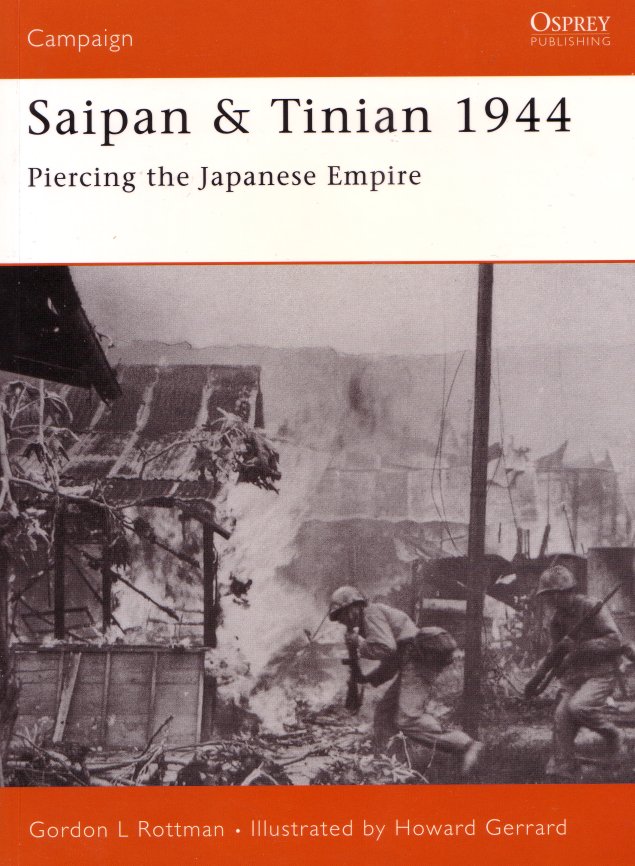
Saipan & Tinian 1944: Piercing the Japanese Empire

This is another in the series of books from Osprey and, like the other books, is rich in information, maps, paintings and photographs. As usual, I will point out some of the things I found most interesting in the book.
The Japanese name for the Mariana Islands is Mariana Shoto.
The name for the American attack on the Mrianas is Operation Forager.
In the attack on Saipan, the south part of the island was to be taken first.
There was no unified Japanese command in the Central Pacific. There was no joint planning between the Japanese Army and Navy. There was a lack of building materials, and reinforcements tended to only partially arrive, many being lost to US submarine attacks.
Tinian is only three miles away from Saipan, but the Japanese had no plan for any kind of joint operation between the two islands.
There were almost twice as many Japanese on Saipan as the US had figured. Only about half of them had weapons, though.
From June 11 to 13, preparatory aerial and naval bombardment of the islands began by the US. Several Japanese convoys tried to flee the Marianas but were attacked, with the results of 12 cargo ships sunk, several escort vessels, and numerous fishing boats.
The fighting was quite fierce on the islands.
The Japanese planned to oppose the invasion with a force of nine carriers, 473 planes, 5 battleships, 13 cruisers, 28 destroyers, 24 subs and seven oilers. This led to the Battle of the Philippine Sea. The end result of all the action was two US ships damaged and 130 planes lost, mostly due to non-combat causes. The Japanese lost three carriers, 476 planes, 445 pilots (only a very few were rescued, apparently), and suffered damage to other ships of their fleet. This was called “The Great Marianas Turkey Shoot.”
There was one of the suicide charges on Saipan, and a mass suicide of Japanese civilians, including women and children.
The battle for Tinian was also vicious, but fewer civilians chose suicide, although many were killed by Japanese soldiers.
Around 29,500 Japanese out of 31,629 on Saipan were killed. Some 22,000 Japanese, Okinawan and Korean civilians committed suicide or were killed by Japanese or American fire.
On Tinian, only 252 prisoners were taken out of 8,039 Japanese starting the fight.
Main Index
Japan main page
Japanese-American Internment Camps index page
Japan and World War II index page
|